|
Home: Adventure Racing: Endurance Training
Endurance Training
Endurance training can mean a lot of different things. When I was playing soccer, endurance training meant a 30 minute run. Now 30 minutes is a recovery run and I can run for 3-4 hours. Bill Lovelace taught me what it meant to go "long." Here you will find find the foundation of the training program I use today to prepare for the toughest endurance race one earth- Primal Quest. I train in the core disciplines of adventure racing: mountain biking, trail running, kayaking, and swimming. This endurance training also carries over to marathoning, roller-blading, skiing, wherever you can go long!
Bill was a world-class triathlete, once ranked third in the world in his age group in the Ironman. He switched to adventure racing later in his career, for a new challenge. These are the answers Bill gave me when quizzed about what does it REALLY take to make it to the top. With a 3rd place Eco-Challenge finish, Bill knows what he is talking about. What should a racer be physically able to do prior to an expedition race?
A simple example is a marathon....racers divide the event in half...the first 20 miles and the last 6 miles...the simple point is that these races get exponentially more difficult as the length of them gets bigger. When you were racing professionally, what did your endurance training schedule like?
I was running about 8 marathons a year...running about 80 miles a week, cycling a ton and working out all day Saturday and Sunday mixing in roller blading, hiking, kayaking and so on. Triathlon days were a hard 50 mile ride Wednesday afternoon, a hard 20 mile run Saturday morning followed by a hard 50 mile ride (same as Wednesday cycle) and 120 miles every Sunday on the bike followed by a short run. We swam about 6 miles a week, ran 80 miles a week and total cycling was around 300 miles a week. Adventure racing just dove tailed off triathlon training. We didn't as much overall as in triathlon because we had to throw in paddling, climbing skills, white water skills plus navigation and long hikes. What would you recommend if you sustain an injury prior to a race or are not where you should be physically?
In the early stages of forming our team for the Eco-Challenge, one team mate, Duane, came to me and said I have a bad foot that is keeping me from training. You guys should find someone to take my place. We found an alternate but left his position open...as it turned out, he was able to get back to training and was put back on the team. What is the next step for me to get to the top?
For us, the key to drinking and eating is to have an absolute time table wherein you take a drink every 15 minutes when it's hot and eat something, small bites, every half hour to an hour... Peace of mind will come when you know you can be called and already be ready, physically and mentally to race (meaning you do not have to gear up for the race...just be ready to suit up).
He did not think we would have what it took to compete against the world's best in Utah at the first Eco Challenge. We were able to finish 8th out of 64 teams and qualify for the Extreme Games in Maine which was four weeks after. What is the next step for your endurance training? Figure out the fitness plan you want to follow, pick your race, train hard and never ever give up! How do you get there? There are lots of ways. Check out the workouts I use for expedition racing right now. Do you have questions about expedition training?Just ask us your questions and we'll post the answers right here. Your questions will be answered by top adventure racers in the world.
ADVENTURE RACING TRAINING RESOURCES |
Sign up for our Extreme Adventure FREE Sports-ZineExtreme Adventure Sports Zine |
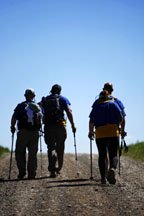 What it takes to be an expedition racer
What it takes to be an expedition racer 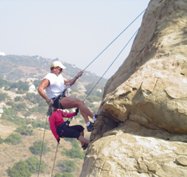 If you can do 100 mile road rides with ease and regularity, and can run/walk marathons with ease and regularity, I'd say you could pick your race and time table.
If you can do 100 mile road rides with ease and regularity, and can run/walk marathons with ease and regularity, I'd say you could pick your race and time table. 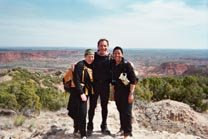 Bill refers here to his Ironman days and adventure racing workouts.
Bill refers here to his Ironman days and adventure racing workouts.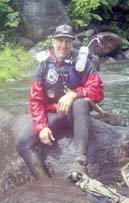 In our world, each team member is responsible for evaluating their level of fitness and advising the other team members.
In our world, each team member is responsible for evaluating their level of fitness and advising the other team members. 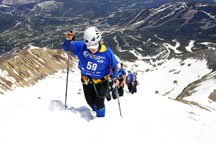 The next steps take total dedication to fitness and an ability to mentally overcome every obstacle, no matter its magnitude...I don't want to make it sound scary, but the next level is a big step.
The next steps take total dedication to fitness and an ability to mentally overcome every obstacle, no matter its magnitude...I don't want to make it sound scary, but the next level is a big step. 








